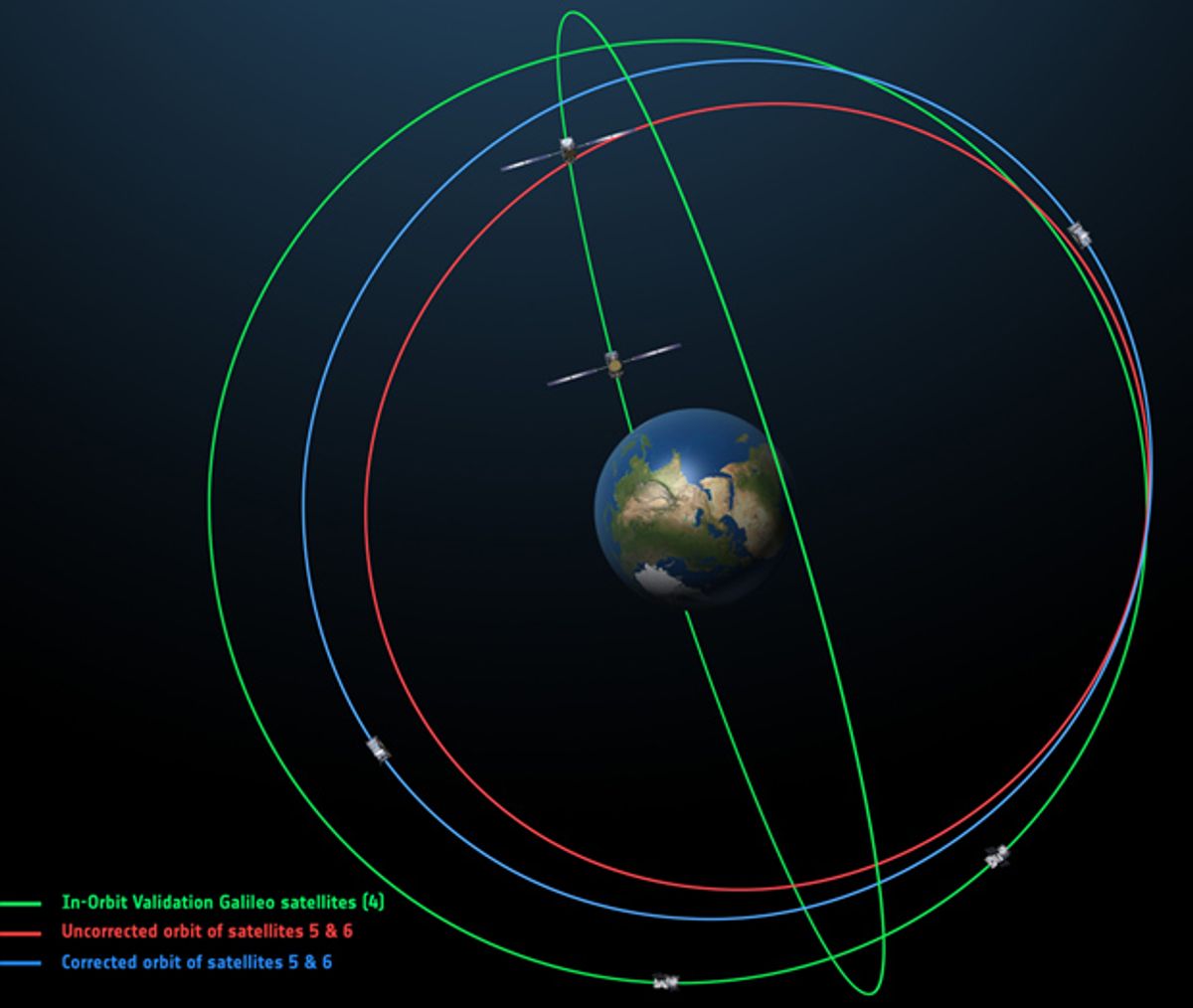After long journeys two satellites that were parked in wrong orbits have reached a "corrected" orbit, allowing them to become part of Europe’s GPS system. When launched in August of last year, a design flaw in the fourth stage of the Soyuz launcher caused the injection of both satellites into orbits that brought them through the Van Allen Belts but also made them unusable as navigation satellites.
At first, things looked grim. The two satellites, the fifth and sixth of a series of 30 satellites, had hydrazine fuel for their thrusters, but the amount was only sufficient for small orbit corrections, not for mayor orbit changes. However, in November ESA engineers used the fifth satellite’s thrusters, to nudge its orbit’s lowest point 3500 km farther from Earth—making the orbit more circular. Testing showed that its electronics were not damaged by Van Allen Belt radiation, and in December it performed, in combination with the other Galileo satellites, its first navigation fix.
The sixth satellite has now been placed in the same orbit but on opposite sides of the planet. The new orbit is not ideal: Contrary to the planned repeat pattern of 10 days, both satellites now pass over the same location only every 20 days, and tracking them by GPS receivers will take longer.
ESA is now testing the sixth satellite, and the European Commission, owners of the Galileo system, will decide whether both satellites will become an active part of the navigation system, now still under construction.
On 27 March a Soyuz-Fregat launcher is scheduled to place two more Galileo satellites in orbit from Kourou in French Guyana.



